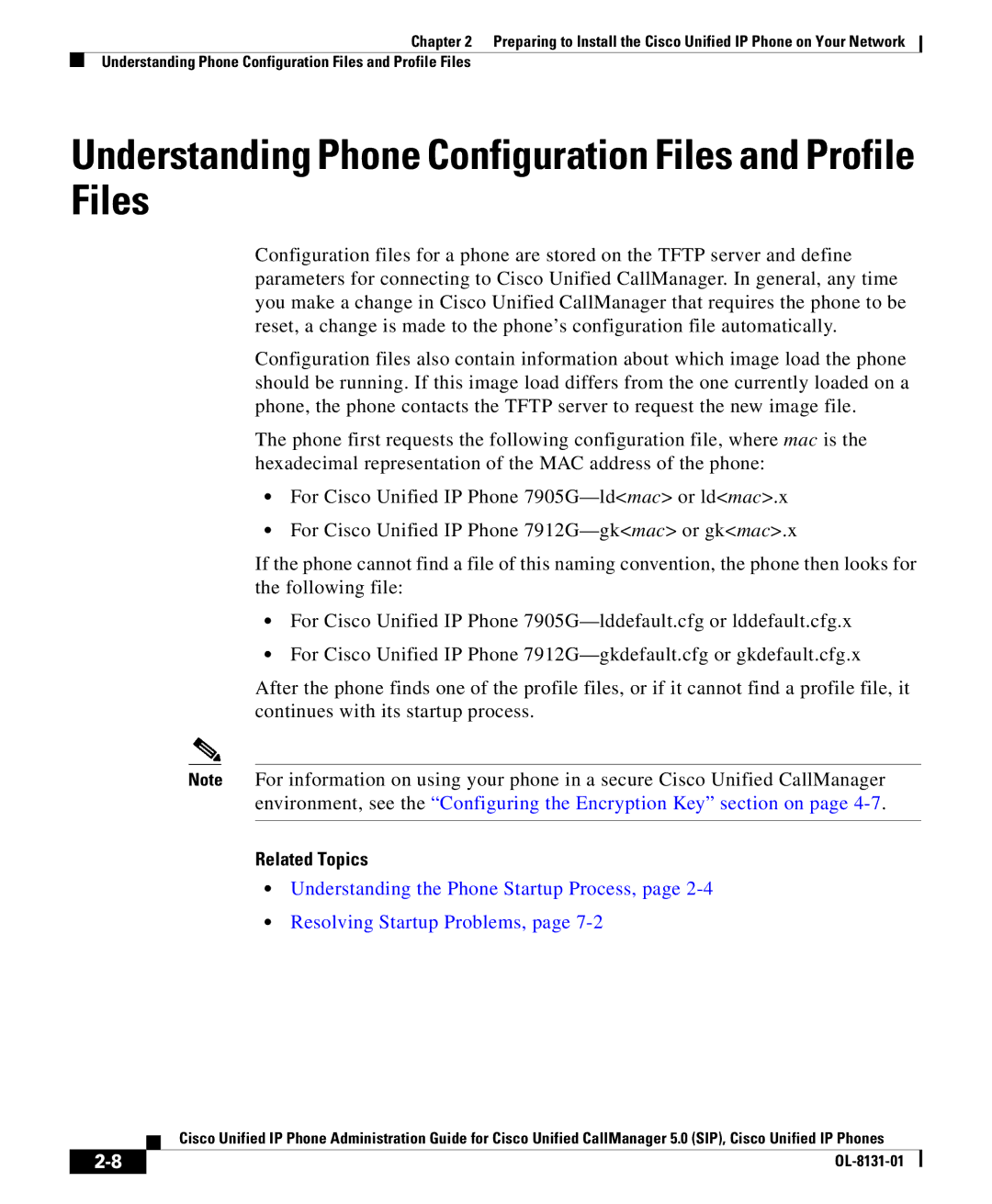
Chapter 2 Preparing to Install the Cisco Unified IP Phone on Your Network
Understanding Phone Configuration Files and Profile Files
Understanding Phone Configuration Files and Profile Files
Configuration files for a phone are stored on the TFTP server and define parameters for connecting to Cisco Unified CallManager. In general, any time you make a change in Cisco Unified CallManager that requires the phone to be reset, a change is made to the phone’s configuration file automatically.
Configuration files also contain information about which image load the phone should be running. If this image load differs from the one currently loaded on a phone, the phone contacts the TFTP server to request the new image file.
The phone first requests the following configuration file, where mac is the hexadecimal representation of the MAC address of the phone:
•For Cisco Unified IP Phone
•For Cisco Unified IP Phone
If the phone cannot find a file of this naming convention, the phone then looks for the following file:
•For Cisco Unified IP Phone
•For Cisco Unified IP Phone
After the phone finds one of the profile files, or if it cannot find a profile file, it continues with its startup process.
Note For information on using your phone in a secure Cisco Unified CallManager environment, see the “Configuring the Encryption Key” section on page
Related Topics
•Understanding the Phone Startup Process, page
•Resolving Startup Problems, page
|
| Cisco Unified IP Phone Administration Guide for Cisco Unified CallManager 5.0 (SIP), Cisco Unified IP Phones | |
|
| ||
|
| ||
|
| ||
